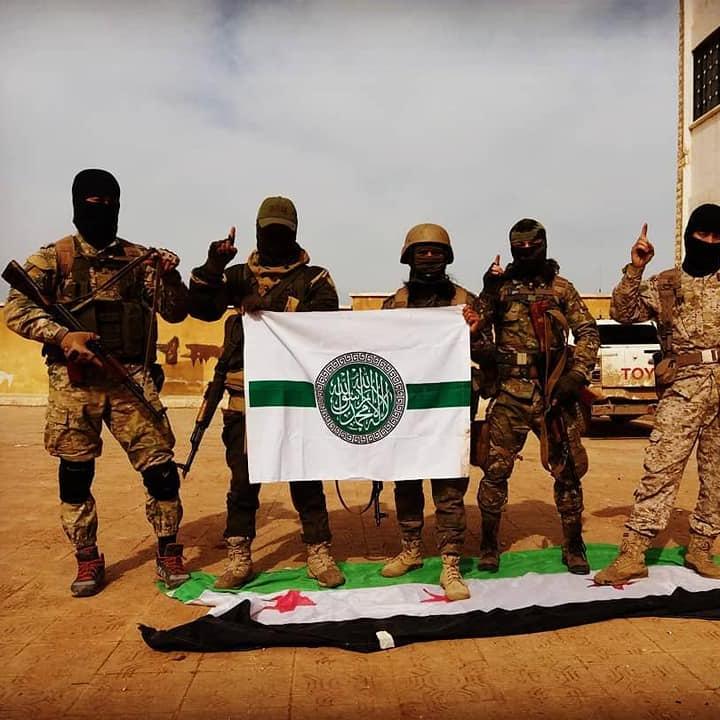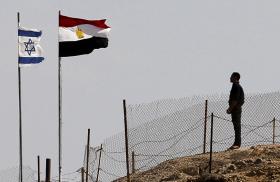
- Policy Analysis
- Articles & Op-Eds
Affirmations of Support and Rituals of Jihadi Martyrdoms
Also published in Global Network on Extremism and Technology

As eulogies for a recently slain militia figure spread online, they highlighted the differences between major jihadi organizations and revealed the solid local roots HTS has formed in northwest Syria.
When a big named jihadi leader dies, there is usually a cacophony of statements released eulogising the individual that was killed. In a way, it allows one to judge the level of support that person might have had or the broader organisation by seeing who actually releases such a statement. These dynamics fully play out within the online jihadosphere, where not only the groups themselves release such content on their preferred online platform of the day, but also the particular group’s supporters on social media then repost and share the same content, expanding the potential reach of these messages of congratulations on someone’s so-called martyrdom.
Last week, Abu Khalid al-Shami, the official military spokesman for Hayat Tahrir al-Sham (HTS), which controls parts of northern Idlib and western Aleppo provinces, was killed in a Russian airstrike. It is the first large-name HTS leader killed in some time, not only because the group has been in control of different areas in NW Syria over the past six years, but also due to a ceasefire brokered in spring 2020 between Russia and Turkey. As a result, due to HTS’s disaffiliation with the Islamic State (IS) and al-Qaeda (AQ), it is a unique avenue to explore the dynamics of who does and does not eulogise Abu Khalid al-Shami online. It also provides another measure of potential HTS consolidation of power at the local level even if everything related to this is happening on Telegram or Twitter.
Past Examples From al-Qaeda and the Islamic State
Historically, when an AQ leader would die, you would see all of its branches as well as independent ideologues and smaller groups release statements on social media platforms eulogising the particular individual that was killed. For example, when al-Qaeda in the Islamic Maghrib’s leader, Abu Mus’ab ‘Abd al-Wadud, was killed by French forces in early June 2020, the following groups and entities released statements congratulating Wadud on his martyrdom: the pro-AQ Thabat News Agency, Harakat al-Shabab al-Mujahidin, Huras al-Din, al-Qaeda in the Arabian Peninsula, al-Qaeda’s General Command, and the AQ-affiliated Global Islamic Media Front. None of this is all that surprising when you consider a similar chorus occurs every time an AQ leader is killed—give or take other media outlets or ideologues that might chime in too.
As for IS, since it has a centralised media system, unlike al-Qaeda, whereby all of its branches have their own media wings, assessing this dynamic takes on a different method of analysis. A better marker for a case like IS is when looking at what happened following the killing of Abu Bakr al-Baghdadi. Looking at IS’s subsequent online bayat (religiously endowed oaths of allegiance) campaign one can see its various wilayat (provinces) as well as unofficially aligned fighting forces give baya to the new self-declared caliph of IS, Abu Ibrahim al-Hashimi al-Qurashi. In essence, unlike AQ and its network releasing textual statements online, IS published pictures, through its official media accounts on Telegram at the time, of members of the organisation giving their oath of allegiance to show the level of support. After IS released all these bayat, they included provinces and unofficial provinces in Egypt, Bangladesh, Somalia, Pakistan, Yemen, Syria, Afghanistan, Tunisia, Nigeria, Philippines, Democratic Republic of Congo, Mozambique, Mali, Burkina Faso, Iraq, Libya, Indonesia, and Azerbaijan.
Who Eulogised Abu Khalid al-Shami?
Since HTS has gone a third way with its jihadi path, it is understandable that neither anyone related to AQ or IS eulogised Abu Khalid al-Shami. There were three types of entities that released statements online congratulating Abu Khalid on his martyrdom: (1) HTS, its ideologues, and other internal governance apparatus; (2) other smaller jihadi groups based in the areas HTS controls; and (3) local councils, tribes, and other entities in the areas it controls. Regarding the first, it included HTS, its military wing, media relations office, ideologues like Abu Mariyah al-Qahtani and Mazhar al-Qays, as well as HTS’s civilian body the Salvation Government and its local municipal apparatus called the Administration of the Liberated Areas. As for the second, thus far, the Turkistan Islamic Party, Liwa’ al-Muhajirun wa-l-Ansar, and a group of foreign fighters released statements eulogising Abu Khalid.
The final category is the most interesting of them all since HTS does control territory and therefore is in direct relation with various actors. There are also three ways one can read the release of eulogies from the entities about to be mentioned: (1) there is genuine belief in their statements and also buy-in to HTS’s local project; (2) those that see it as a way to curry favor with HTS’s local power structure; or (3) those that might not support HTS, but feel compelled to say something due to past or potential future coercive measures by HTS. Therefore, two of the three interpretations of potential support given online could be interpreted as performative for either positive or negative reasons. Yet they still have real-world, on-the-ground consequences since one cannot completely disconnect what is happening online from the real world, especially in these scenarios where a jihadi group is controlling territory. With that said, here is who has released such statements so far: residents of Halfaya (Hama Governorate), al-Jabur Tribe in the Liberated North, al-Majlis al-Thawri al-’Am for Idlib Province, Marsad al-Shamal, Alteh Village (Idlib Province), al-Nu’im Tribe, Majlis Muhajiri of Saraqib, al-Uqaydat Tribe (Homs-Hamah), Bani Khalid Tribe, Albu ‘Asi Clan of the al-Bakarah Tribe, and Displaced Residents of Damascus and its Countryside in the Liberated North.
Whatever the reasoning behind these entities releasing eulogy statements for Abu Khalid is, it provides HTS an opportunity to promote these indirect affirmations of support. Therefore, unlike the cases of AQ and IS, where both are related to more internal dynamics of their own fighting networks, for HTS that continues to remain a feature but they also have a broader spectrum of actors in mind. This highlights the less insular nature of HTS in general, and further illustrates how it has solidified its roots in the local communities of NW Syria. It also is another way that HTS’s supporters online can then repost these more localised statements to act as a megaphone for HTS’s online community. Therefore, exploring these microdynamics related to eulogy statements following the death of a jihadi leader, one can gain greater understanding of how different HTS is in some ways from its prior comrades in AQ and IS as well as its level of local consolidation of power—even if there remain pockets of discontent against HTS rule locally.
Aaron Zelin is the Richard Borow Fellow at The Washington Institute and a visiting research scholar at Brandeis University. This article was originally published on the GNET website.



